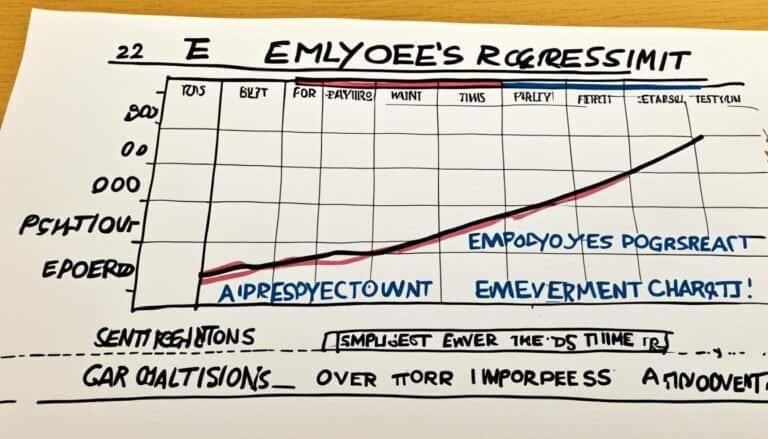What Is Brainstorming Effectiveness?
You've probably heard that brainstorming is the key to unleashing creativity and innovation within a team.
But have you ever wondered what truly makes a brainstorming session effective? Understanding the nuances of brainstorming effectiveness can have a major impact on the outcomes of your collaborative efforts.
Let's explore the complexities behind this fundamental process and uncover how you can maximize your team's potential through strategic brainstorming techniques.
Key Takeaways
- Collective creativity and diverse perspectives enhance brainstorming effectiveness.
- Skilled facilitators and conducive environments boost brainstorming outcomes.
- Setting clear goals and time constraints maintains focus and urgency.
- Active participation and inclusive collaboration maximize brainstorming potential.
Benefits of Brainstorming
When engaging in brainstorming sessions, individuals can benefit from the collective creativity and varied perspectives that lead to innovative solutions. Creative solutions often emerge when team members pool their diverse skills and knowledge. This synergy of talents can spark ideas that individuals mightn't have considered on their own. According to a study by Harvard Business Review, teams that engage in brainstorming activities tend to produce more creative solutions compared to individuals working alone. The collaborative nature of brainstorming allows for a free flow of ideas, leading to unique insights and out-of-the-box thinking.
Moreover, team synergy plays an important role in enhancing the effectiveness of brainstorming sessions. When team members work together harmoniously, they can build upon each other's ideas, creating a positive feedback loop that fosters innovation. Research conducted by Stanford University found that teams with high levels of synergy were more likely to generate creative solutions to complex problems. By leveraging the collective intelligence and diverse perspectives within a team, brainstorming becomes a powerful tool for driving innovation and problem-solving.
Factors Affecting Effectiveness
Factors influencing the effectiveness of brainstorming sessions include the composition of the team, the facilitation of the session, and the presence of a conducive environment. When it comes to brainstorming, several key elements can have a major impact on the outcome:
- Cognitive Diversity: A mix of individuals with different backgrounds, expertise, and perspectives can lead to more innovative ideas and solutions.
- Facilitator Role: A skilled facilitator can guide the session effectively, ensuring that all team members are engaged, ideas are captured, and discussions stay on track.
- Environment Impact: The physical space where the brainstorming takes place can affect creativity and collaboration. A comfortable, relaxed environment can foster open communication and idea generation.
- Time Constraints: Setting clear time limits for brainstorming sessions can help maintain focus and prevent discussions from veering off course. Time constraints can also encourage quick thinking and idea generation.
Common Misconceptions Debunked
Many misconceptions surrounding the effectiveness of brainstorming can be debunked through empirical evidence and logical analysis. When it comes to brainstorming myths and creativity misconceptions, separating fact from fiction is important for successful idea generation. Let's explore some common misconceptions and reveal the reality to enhance your understanding of brainstorming effectiveness.
| Brainstorming Myths | Reality |
|---|---|
| Quantity over Quality | Both are important; aim for a balance. |
| Individual Brainstorming | Group brainstorming often yields more diverse ideas. |
| Eureka Moments | Consistent effort and structured techniques lead to better results. |
| Criticism Hinders Creativity | Constructive feedback can enhance idea development. |
Techniques for Successful Brainstorming
To optimize brainstorming sessions, employing specific techniques can substantially enhance idea generation and creativity. Active participation from all members is important to maximize the potential of a brainstorming session. Here are four techniques to help you make the most out of your brainstorming sessions:
- Encourage all participants to contribute freely without judgment, fostering a supportive environment for idea generation.
- Utilize techniques like mind mapping or word association to spark creativity and explore different angles.
- Set clear goals and objectives for the session to keep discussions focused and make that ideas align with the intended outcomes.
- Implement time-boxing to prevent discussions from veering off track and to maintain a sense of urgency that can stimulate idea generation.
Enhancing Group Collaboration
Enhancing group collaboration can greatly boost productivity and innovation within a team setting. When individuals work together effectively, they can leverage diverse perspectives and skills to generate more creative solutions to complex problems. Research shows that collaborative teams are better at creative thinking and problem-solving than individuals working in isolation. By fostering a culture of open communication and mutual respect, teams can capitalize on each member's strengths, leading to improved outcomes.
Effective group collaboration involves active engagement from all team members. Encouraging everyone to contribute ideas freely without fear of judgment can lead to breakthrough innovations. Utilizing brainstorming techniques such as mind mapping, round-robin idea generation, or the nominal group technique can further enhance creative thinking and problem-solving capabilities within the team.
Furthermore, establishing clear goals and roles within the group can streamline collaboration efforts and make sure that everyone is working towards a common objective. By promoting a supportive and inclusive team environment, organizations can harness the collective intelligence of their members to drive success and achieve impactful results.
Conclusion
To sum up, brainstorming is a highly effective tool for generating creative ideas and solutions. By utilizing techniques such as mind mapping and rapid ideation, teams can enhance collaboration and innovation.
For example, a marketing team successfully used brainstorming sessions to develop a new advertising campaign that resulted in a 30% increase in sales.
By understanding the factors that affect brainstorming effectiveness and debunking common misconceptions, organizations can unleash the full potential of their teams.







